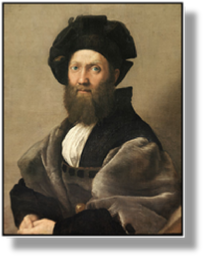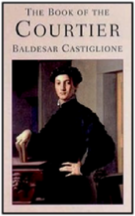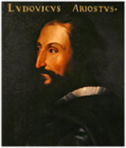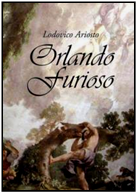


BALDASSARE CASTIGLIONE 1478 -
(E4, E5, R3, H7, H8)
xxxxxThe Italian writer Baldassare Castiglione (1478-
Including:
Ludovico
Ariosto

xxxxxThe Italian diplomat and writer Conte  Baldassare Castiglione (1478-
Baldassare Castiglione (1478- d prose, and a perfect command of his mother tongue.
d prose, and a perfect command of his mother tongue.
xxxxxBut the value of The Courtier goes beyond the good manners and social requirements of high society. Castiglione came into close contact with the most eminent people of his time. Thus his treatise on the perfect courtier, together with his large collection of letters, provides a first-
xxxxxIn recognition of his services he was made a Count in 1511, and in 1525 he was sent to Spain as apostolic nuncio to the court of Charles V in order to settle a dispute between the pope and the Spanish king. He spent the remainder of his life in this country and died in Toledo. His portrait above is by the Italian artist Raphael, painted around 1514.
xxxxxIt was while Castiglione was writing The Courtier that his compatriot, the poet Ludovico Ariosto (1473-
xxxxxCastiglione actually wrote T he Courtier over the years 1513 to 1518, and it was during this period (1516) that his compatriot, the poet Ludovico Ariosto (1474-
he Courtier over the years 1513 to 1518, and it was during this period (1516) that his compatriot, the poet Ludovico Ariosto (1474-
xxxxxIn Orlando Furioso our hero is  driven mad (hence the “furioso”) by his unrequited love for the lovely Angelico, but he overcomes his emotions and goes on to defeat his rival, the leader of the Saracens. This Renaissance romance, a narrative poem full of magic, chivalry and courtly love, is not to everyone’s liking, but it became widely popular at the time, and was a notable influence on later writers, particularly in England following the translation of the work by Sir John Harrington in 1591.
driven mad (hence the “furioso”) by his unrequited love for the lovely Angelico, but he overcomes his emotions and goes on to defeat his rival, the leader of the Saracens. This Renaissance romance, a narrative poem full of magic, chivalry and courtly love, is not to everyone’s liking, but it became widely popular at the time, and was a notable influence on later writers, particularly in England following the translation of the work by Sir John Harrington in 1591.
xxxxxLike Castiglione, Ariosto also served as a diplomat and went on numerous missions, many on behalf of Cardinal Ippolito Este, son of Duke Ercole I, but his heart was in writing, not the diplomatic service, and by 1525 he had saved enough money to retire to Ferrara along with his mistress. Here, he became the director of the town’s new theatre. Apart from Orlando Furioso, a poem which he continued to refine up to the year of his death, he also wrote five comedies and seven satires, but these are not works by which he is well remembered.



Acknowledgements
Castiglione: portrait by the Italian Renaissance painter Sanzio Raphael (1483-
H8-